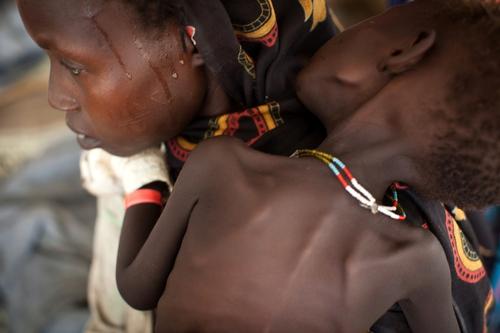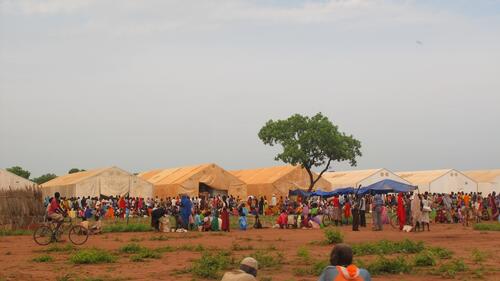Many of the refugees from Sudan’s Blue Nile State who have fled to Maban County in South Sudan’s Upper Nile State had family members who could not complete the journey and died before they reached Batil camp. In some cases, they said their relatives died because they were “tired of walking,” which illustrates the weakened, vulnerable state in which much of this population arrived at the camp. It also points to the massive need for assistance for those that managed to arrive alive.
Mortality more than double emergency levels for children
Data gathered by Médecins Sans Frontières (MSF) epidemiological teams shows that mortality for the total refugee population in Batil is substantially above the emergency threshold, and mortality for children under five is more than double the emergency threshold.
The newly constructed Batil camp started to accommodate large numbers of refugees in early June, when some 35,000 refugees crossed the border from Sudan’s Blue Nile State.
Between 3 and 4 children under five years old have been dying every day in Batil camp.
Fifty-eight percent of reported deaths among the refugees since they arrived in Batil camp have been children under five years old. More than 25 percent of reported deaths were for people over 50 years old. In many emergency interventions children under five are the first priority, but to see this level of mortality in over-fifties is unexpected and indicates a particularly dire health situation.
Cause of death
The major cause of death reported while these refugees have been in Batil camp is overwhelmingly diarrhoea, constituting more than 90 percent of deaths, with malnutrition likely to have been a contributory factor in many of the deaths.
Shocking malnutrition
A quarter of children under five years old are malnourished, and 10 percent are in the most severe acute stage of malnutrition, requiring urgent therapeutic feeding.
Even more shocking, half of the children under two years old in the camp are moderately or severely malnourished.
Respiratory diseases rising
The rainy season and cold nights are making matters worse, particularly since many households have only one blanket to share between often six or more people. While respiratory tract infections constituted around 10 percent of MSF’s consultations in Batil in June, they have been rising alarmingly and last week they constituted more than 40 percent of the consultations by MSF medics.
MSF response
MSF has more than 180 expatriate staff and more than 800 locally recruited staff on the ground in the five refugee camps for Sudanese refugees in South Sudan. The first emergency interventions were started in November 2011 when refugees first arrived in Yida and Doro camps in South Sudan. MSF rapidly expanded its emergency activities over the following months as the number of refugees grew, as the rainy season started, and as the health situation in the camps deteriorated.
In its tented field hospital in Batil camp, MSF now has more than 1,600 children suffering from severe acute malnutrition in the therapeutic feeding programme. Every week about 30 of these children need to be admitted into intensive care with life-threatening medical complications such as diarrhoea or respiratory diseases. Since the Batil camp was set up in May, MSF has conducted more than 14,500 medical consultations, as well as assisting with the set-up of water distribution networks and the distribution of basic survival essentials when the refugees first arrived.
Pushing the boundaries of what’s possible:
“This new data reflects exactly what I see every day,” says Helen Patterson, MSF’s medical coordinator for Batil camp. “This is a health catastrophe. With half the children under two years old malnourished, and living in cold, wet conditions, and hundreds falling ill with diarrhoea and respiratory diseases, our field hospital is overwhelmed with critically ill patients. We’re pushing the boundaries of what’s possible logistically to get staff and supplies here and continue saving lives.”
Emergency thresholds and 'norm' levels:
- Crude Mortality Rate (total population) of 1/10.000/day and under-five-yrs-old Mortality Rate of 2.0/10.000/day are commonly used as the thresholds of gravity in emergency situations.
- CMR of 0.5/10.000/day and U5MR of 1.0/10.000/day are levels considered 'normal' for developing countries (UNHCR, 2002; MSF, 2006).





